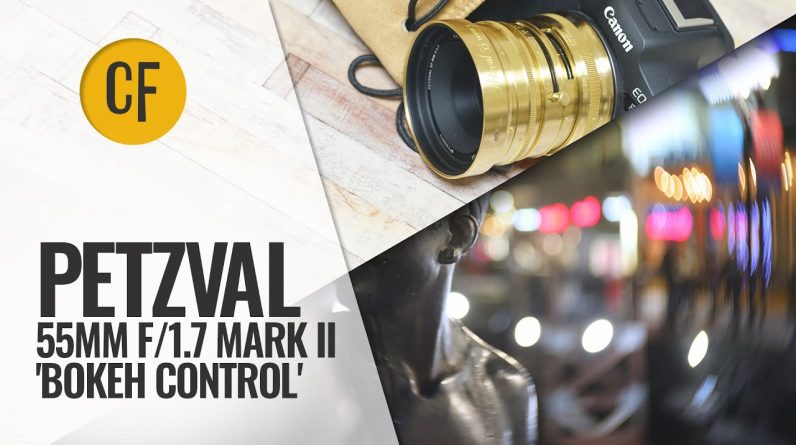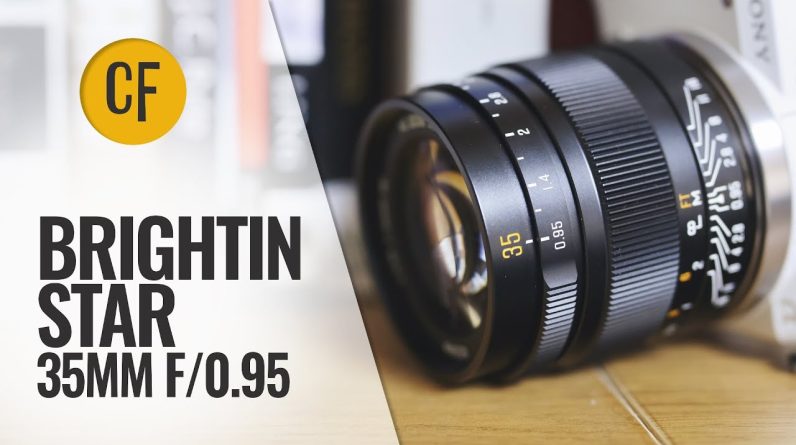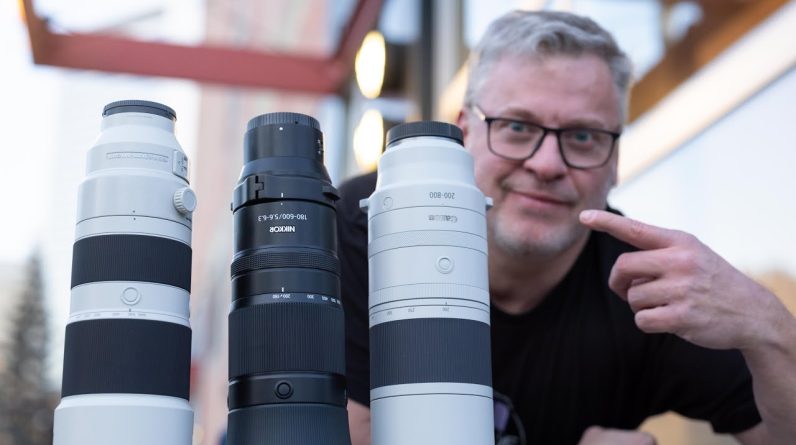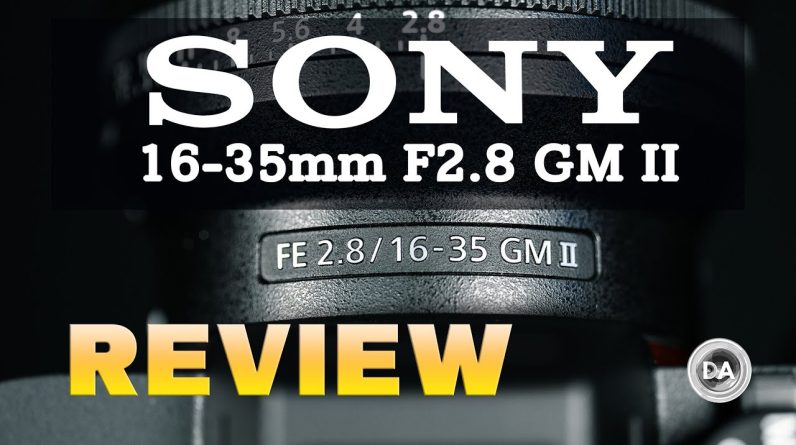I’ve been receiving a lot of requests To conduct the same
tests for video shooting That I did on the Fujifilm
X-H2S, but on the newer X-H2. And so I did that, And today I’m gonna share
those results with you. Let’s get Undone. (electronic music) Gerald Undone. (electronic music) He’s crazy. What’s happening, everybody, I’m Gerald Undone, and I
feel a lot more like I do now Than I did a while ago. So Fuji was kind enough
to re-lend me the X-H2S Along with the new X-H2
and a couple of lenses, So that I can compare
the technical details That we covered in the previous video. I highly encourage you
to watch that video, If you haven’t already, As we will not be retreading
over any of the redundancies, And there are a lot of them, As these two cameras are
identical in most ways. As usual, Fuji didn’t sponsor this video, No money changed hands, And they don’t get any input
on this video’s production Or get preview before it’s posted. This video does have a sponsor though, And that’s Nebula and their
partner Curiosity Stream. So the main differences
between these two cameras Is the sensor and the price. The X-H2S is $2,500 U.S. For a 26 megapixel stacked APS-C sensor, Where the X-H2 is cheaper at $2000 U.S. For a higher resolution
40 megapixel sensor,
But it’s not stacked, and thus is slower. For video, this means you
can record 8K on the X-H2 Instead of just the 6K on the X-H2S, But the rolling shutter is worse And you no longer have 4K120. And even the 4K60 has some drawbacks, Which we’ll get into shortly. You can also record 6K on the X-H2, Which is oversampled from the 8K, But it’s 16:9 and there
are no open gate modes On this camera, Unlike the 6.2K 3:2 capture of the X-H2S. These different sensors may produce Different auto-focus results as well. I had a hard time telling the difference, But I believe the X-H2 is
supposed to be slightly worse. I’m not the biggest fan of
Fuji’s auto-focus for video And found them both to be
somewhat lacking, but similar. But just for clarity, Allow me to reiterate that
the rest of the hardware Is the same, same screen,
same EVF, same battery, Same ports, same layout, buttons, dials, And same compatibility with accessories Like the battery grip and fan attachment. And in the menu, You have almost entirely
the same experience, Including my complaint about
the overcomplicated codec And recording mode options, The notable difference
being the maximum resolution And frame rate with the X-H2, Allowing up to 8K at 30 frames per second. There’s also this clever digital zoom, Which when you’re in the
oversampled mode, the 4KHQ, It allows you to zoom in up to 2x
By basically reducing
the amount of resolution That you’re oversampling from. So instead of 8K, as you go down 2x, It’s just 4K 1:1, But you could do a 1.5x and
zoom in a little bit further, But oversampled from a
lower overall resolution. It’s a clever implementation
and it works well. However, the oversampling
does have a limitation In that it doesn’t apply to the 4K60. And the 4K60 on this
camera also has a crop, Which the X-H2S doesn’t. And I believe the 4K60
oversamples on this camera. So there’s a big difference in the 4K60 Between the two cameras. On this one, you’re getting it cropped, Non oversampled 4K60. And there’s sort of an issue With the non oversampled
4K on this camera That I’m gonna show you
some comparison examples Of when we get into the
dynamic range and noise. Actually, why don’t we
jump into that right now And I’m gonna start recording my screen And share with you my results. Alright, so as you can see along here, I did a ton of dynamic range
tests using the Xyla 21, Similar to what I did with the X-H2 Just because there’s so
many combinations of codecs And resolution options, And I wanted to see
what the sweet spot was. And I have that for you. These are the results
generated from Imatest, And a quick little refresher
if you don’t remember, The slope-based DR number up here, That’s sort of the total number of stops
That the camera can see. This is usually when a
manufacturer advertises A camera can do 14 stops or 15 stops, They’re referring to this number here. And then, we also like to look At the 0.5 medium score here. This is with a signal
to noise ratio of two. So this is how many stops
are clean and usable Versus just how many exist. And so for instance,
this first result here Is with the X-H2, this is 4KHQ, And the HQ thing is important, That’s the oversampled one ’cause we’re gonna talk a lot about that. And this is F-Log2 and ISO 1000, There’s a different
base ISO on this camera Than there was on the X-H2S. And so we’re seeing 15
stops total pretty much, And we’re getting 11.7 clean stops. And if we compare that
to the X-H2S in F-Log2, Again, the base ISO is 1250,
it’s a little bit higher. We’re also, we’re seeing
14.6 and getting 11.9. So within the margin of
error of being pretty similar To where I wouldn’t feel confident Saying one is definitely better. And in fact, in a lot of my tests, I had difficulty seeing
one do significantly better Than the other when
comparing HQ to the X-H2S, Not when you turn off oversampling. Now, we also have F-Log1 for the X-H2, Which is fewer stops
total, 13.6, but 12.2. Now, keep in mind, these scores Are all with noise reduction turned off As best I could in camera.
So that’s turning it down to minus four And turning off the other
option on both cameras When doing the comparison. Shooting in 8K and putting
it in a 4K timeline, We get, again, 14.9 and we get 11.4. So the difference here is, if
you let the camera oversample And you shoot it in H265, You get a slightly better result Than if you do the oversampling yourself In an NLE by just
dropping it in a timeline And allowing it to downsample. You could, again, finesse the 8K image To get you a better result,
but if you just do no work, They’re similar to like a third of a stop, But slightly better to
let the camera do it. Because H.265 seems to handle noise better Than ProRes and H.264. And then here, we have the 8K
ProResHQ on an 8K timeline. This is the worst result you’re gonna get In the sense that nothing
is being done to the image. It’s 8K ProResHQ straight into the camera, Dropped in an 8K timeline,
and measured in its 8K size, And it’s 10.8. But again, so 10.8 clean of 14.9, But this image is about as pure As you’re gonna get outta this camera, So you could noise reduce this in post And produce probably
the best result of all, If you wanted to, ’cause no oversampling’s
been done yet, nothing. So you could drop this in a 4K timeline, Add some noise reduction, And you’re gonna get 13,
14 clean stops if you want. Because the Fuji sensors, I find,
Cleans up really well Because the noise is noise is quite nice. And I have a little
example of noise reduction, But without even using the 8K image. So this is 4K HQ F-Log2
ProResHQ out of the camera, Too many HQs. And so we get 11.6 stops and
it can see a total of 15.1. So this is what I was talking about. The ProRes, you get a slight reduction, Like a 10% reduction when you
shoot ProRes instead of H.265. But then, if we noise reduce
this in DaVinci Resolve, Whenever I do these tests, I just do a tiny bit of noise reduction Just to see how it cleans up. It jumped up to 13.6 with a
14.6 of the 1.0 low score. And you could push us
a little bit further, You could do some chroma
work, and you’re gonna get A really, really good
noise reduction result. I talked about this a
lot in my X-H2S review. Anyway, that’s just to
show you get two stops From just adding a little bit
of noise reduction in post. So that’s impressive. And then lastly, let’s talk
about the non over-sampled one. This is the X-H2 just 4K. Now, it’s interesting, You’ll notice that it still
gets 11.7 clean stops. But look what happened
to the total stops seen. Here, I’ll switch back to the 4KHQ. So 14.9 stops it can see, 11.7 clean. When non oversampled, 12.6
stops total, 11.7 clean. And look at the low number, It’s exactly the same as
the total dynamic range. Where over here, there’s a
disparity, as there should be. So this is strange
Because I’ve never seen
a camera do this before. But what’s happening,
as far as I can tell, Is that when you turn off oversampling, So you’re just shooting
sort of a line-skipped 4K, It’s also cutting off
anything at the noise floor And just crushing it to black. So fundamentally, it means That there’s a massive dynamic
range potential difference Between the two because
there’s no way you can clean up The non-oversampled
mode, 12.6 is the max, No matter how much noise
reduction you apply, It can’t turn black into an image. And here’s what it looks
like in an actual clip. So this is the oversampled mode, And note, the tonality, I
guess, of the shadow over here, As well as the dark chips, And then, when I switch
to the non oversampled, See how it gets darker And the black here becomes very black? Let me switch back. This is almost like a dark
gray, and now, it’s black. And here’s what we see with the Xyla 21. Look how many stops into
the shadows we can see. And then, if we turn off oversampling, See how it just cuts a bunch of them away And these ones get a lot more harsh? Every setting is the same in the camera, I’m just changing HQ on and off, That’s all I’ve been changing. I don’t know why it’s doing that, But it’s doing that and I confirmed it. I reached out on Twitter
and, thankfully, a user, I don’t have Twitter on this computer, So I can’t pull up his name,
but I’ll put it in edit,
I’ll put it on the screen here now. Thank you for helping me out. I just wanted to make sure It wasn’t just my camera doing this, But sure enough, this user, Actually, I think I have his clips here, He sent me two clips. So you can see, this one
has a certain sort of level Of shadows to them
around Hitchcock’s head. You just lose information
that goes into black. So it’s not just my camera,
it’s other cameras as well. I shared these results with
Fuji and reached out to them To see if they had any information, And I don’t have any answers back yet. So if I do get something
in the in the near future, I’ll pin a comment if there’s an answer, Maybe there’s firmware coming, Or maybe it’s meant to do
that, and here’s a reason why. I’ll put whatever I get
and I’ll pin a comment. Now, because the base ISOs aren’t the same On these two cameras, The second native ISO
isn’t the same either. Now, just like I said with the X-H2S, This one is kind of speculative Because it’s really hard to see. But if you do move your
way up the ISO range, You do see it clean up at a certain point. On the X-H2S in F-Log2, I believe, it was ISO
3200 you see it clean up. On the X-H2, it seems
to do the same thing, But at ISO 2000, so lower. It’s like base is 1000, cleans up at 2000, This one was 1250, cleans up at 3200. Not even the same spread, but
that’s the best I could see.
Again, it’s very, very subtle though. And then, as far as noise
performance overall, I would say they’re very similar. There might be slightly
more noise on the X-H2, But it’s very hard to tell. And like I said, they both
clean up extremely well, Just like we saw with the X-H2S. Now, there are some rolling
shutter differences, As you might expect when
comparing a stacked sensor To a non stacked, Especially when the non stacked
is even higher resolution. But the X-H2 had a stellar readout speed Of I think 1/180th of a second. Now, the number I got
from Fuji for the X-H2 Is 1/88th of a second, Which actually is a pretty good result. But I’m not sure to
which mode this applies Because there’s obviously a difference Between the regular 4K
and the oversampled 4K. I’m thinking that the
188th might be the bad 4K, The crushed blacks 4K,
the non-oversampled 4K. Because that mode reminded me more Of like an a7S III speed,
which would be similar, I think, the a7S is like 1/100th
of a second, so similar. Where when you put it
in oversampled mode, While still not terrible
for rolling shutter For an 8K oversampled readout, It is jello-ier than the
a7S III and similar cameras. So I think the 1/88th, if I’m not mistaken, Applies to the non-oversampled mode And you’re gonna get a slower
result on the oversampled 4K. But that’s up to you whether
that’s too much or not. It is noticeable when
compared to the X-H2S. I compared the color
And white balance between the two cameras, And I noticed that they were
almost exactly the same. When it comes to white
balance proficiency, They’re both really, really good. As you can see here, I’m
getting 130, 130, 129, So the RGB channels are
almost perfectly balanced On the X-H2S, I believe, that one is. And then, on the X-H2, 129, 129, So again, very, very, very similar, And both pretty much perfect. However, if you look at
the vectorscope down here, The X-H2S and then the X-H2,
when shooting in a Eterna, And I believe other
film emulations as well, The X-H2 seems to be
slightly more saturated, Just a little bit, but it’s there. However, if you shoot in Log, If you look at the points down here As I switch back and forth, This is just using the
manufacturer LUT for Log, They both fall in very similar places. You’re not gonna have any
issue mixing the footage. But there are different
LUTs for each camera, And the LUTs are all
available on Fuji’s website. So you have F-Log1 and 2 LUTs For both the X-H2S and the X-H2. Okay, now here, I wanted to talk about
the resolution and detail, And what’s fun about it
is we can actually see A little bit of what’s going on In the non-oversampled mode. So let me show you an image of what the, This is the 4KHQ mode. So if we zoom in real, real tight here, We can see how the
pixels are being resolved
On a 4K timeline. And if I switch to the 8K image, We can see, they’re very
similar, there’s a slight shift. And then, here’s the X-H2S, Which has a slightly different pattern For how it handles the
pixels and the oversampling, But still very, very, very good. Maybe slightly worse around
these high contrast edges here, If we compare it to the 8K
and 8K over-sampled versions Of the X-H2. But keep in mind, we’re at like 360% here. If you pull out a little bit And you kind of look at
sort of general details I flipped through,
you’re not really gonna, Not trying to say 8K
doesn’t mean anything, But I’ve always said That once you hit like 6K oversampling, Anything beyond that
is pretty hard to tell, Unless you’re reframing at 200%. And even then, basically
don’t worry about resolution And detail on either of these cameras, You’re gonna be perfectly
set with either of them. Unless we’re talking about the
non over oversampled mode, Which also applies to the 4K60. So that stuff I showed you
about it getting darker, That’s gonna happen on
the 4K60 on this camera ’cause there’s no 4K60 HQ mode. So in that case, this really pulls ahead. And also let’s look at
what it’s actually doing In this non-oversampled mode. So there’s a huge difference here. Look between this image, Which is over-sampled, and this one. And so what’s interesting
is you see how we’re seeing
These long, like, vertical bars
of combined kind of pixels? So this mode, the non-oversampled, the non-HQ mode, It’s reading from the
same horizontal resolution Of like an 8K horizontal resolution, But its vertical resolution, The amount of lines that it has Is not an 8K amount of
lines being sampled from. It’s only sampling from
a 4K amount of lines. So it’s actually slightly more than 4K. So imagine you’re getting
a 1:1 amount of lines, But a 2:1 horizontal resolution. So it’s kind of like line skipping In the sense that we’re
skipping a certain amount, Or maybe they’re
combining them beforehand, I don’t really know the process, You never find that out from
the manufacturers too much. But it’s doing something
to the vertical resolution And then leaving the
horizontal resolution intact, And so you end up with
these kind of streaks, These vertical streaks,
which is, it’s interesting. Anyway, this is just for fun. But it’s fun how when you
have high contrast stuff Like this red to blue–this is
a chroma subsampling chart– You can really see kind
of like the weird patterns That it does compared to non modes. But when we zoom out,
it’s not too terrible, Which is why I generally
don’t worry too much About a good binning
algorithm versus oversampling When it comes to wide shots full of detail Because they’re both gonna look good. The main issue with the non-HQ mode Isn’t this limited vertical resolution, It’s the weird crushing the blacks thing, That’s what actually kills it for me.
But I just thought you
would find that interesting. As far as oversampled on either camera, They both look great, But 4K60 is definitely better over here Because of vertical resolution, Because of crop, and because
of weird crushed blacks. It’s also worth noting that
that issue doesn’t occur If you shoot in just 6K or 8K, Then you get, again, full shadow detail, You don’t get any black cutoff
at 12 stops or whatever, You still get to see the
whole image in 6K and 8K, Which is why I know
that it’s sort of being, Not created by the way that
it’s being subsampled, But rather happening at the same time. Because I’ve never seen anybody else That uses any kind of binning or skipping Create that weird crushed black effect. But whatever’s going on at
that time in the pipeline Is when the other thing’s going on. ’Cause if you shoot 6K or
8K, you’re fine as well, So that’s no big deal. So my advice is to shoot
in 4KHQ on this camera. Of course, that means
you can’t shoot in 4K60, So if you need to shoot in 4K60, That’s a whole another, I mean, we’ll talk about that
when we talk about value. But basically, I’m saying
shoot in 4KHQ mode, And then F-Log1 or F-Log2
is kind of up to you, You get more potential headroom in F-Log2, But you’ll have a slightly
cleaner image rate At a camera with F-Log1. Now, when it comes to shooting in 4KHQ, I obviously did some battery
rundown and overheating test To make sure that it’s usable
in the 4KHQ, and it is.
I was able to record two hours
and three minutes in 4KHQ, I think was 4K24, in a
climate-controlled environment. And heat was not an issue, that
died because of the battery. And the camera, it got a little bit warm, But nothing to be too worried about. Comparatively, if you
shoot in 4K non-HQ mode, I got two hours and 37 minutes, So you actually get an extra half hour, And the camera was still
like room temperature, It didn’t even warm up at all. So you are creating more heat And shooting through the
battery faster with HQ, But you can still get a good two hours Out of the camera
battery-wise in the HQ mode. So I’m sticking with shoot 4KHQ. And then, I also did
the rundown test in 8K And I got one hour and 49 minutes. And at that point, the camera’s
pretty hot to the touch. So it was a smaller difference
between 4KHQ and 8K Because they’re both sampling from 8K, But recording the 8K cooked
the camera up pretty good. So hopefully, that information is useful In helping you decide which
camera is right for your needs. I’d say the easiest way to look at it Is that if the camera is gonna
be used on a static tripod And shooting at 30p or lower, You might as well save
the $500 and get the X-H2. The only time you’re
gonna see an advantage In spending the extra money for the X-H2S Is if you’re shooting a
lot of 4K60, or 4K120, Or doing a lot of panning,
or run and gun style filming. It’s in those applications that
the faster reading S camera Will show it strengths. That being said, you can still shoot 4K60
On the X-H2 in a pinch, It’s just less convenient with
the crop and a worse image Than what the X-H2S can
produce at that frame rate. But if I had to buy one for in here For talking head style YouTube videos And locked off product shots, I’d get the X-H2 and save the $500. Overall, I think both of these
cameras are solid options For Fuji shooters, And I like that they’re both
available at different prices, Depending on your needs. And while we’re on the topic of value, I’d like to tell you
about the awesome deal Going on with the sponsor
of today’s video Nebula And their partner Curiosity Stream. So Nebula’s a platform that
gives YouTubers like myself A place where we can
host our content ad-free Without fear of YouTube
restriction or demonetization. It’s mostly educational or
education-adjacent content, And I’ve recently been
migrating my catalog over there And have a bunch of
videos uploaded already. I really love the platform,
highly recommend it. Watching your favorite creators on Nebula Supports us directly financially And allows you to watch
the content you enjoy Without the ads of YouTube
or the sponsor reads. They have a ton of great
channels on the platform, Like Real Life Lore, Minute
Physics, Cinema Wins, And LegalEegal to name a few. But the most cost
effective way to get Nebula Isn’t to subscribe to it directly,
but instead by signing up For our partner service Curiosity Stream. Which also happens to be
the best streaming service On the internet when it
comes to documentaries
And educational content. Because when you sign
up for Curiosity Stream, You get Nebula for free. And if you use the promo code undone By going to curiositystream.com/undone, Or by just clicking the
link in the description, You’ll save an additional 26%
and get both Curiosity Stream And Nebula for just
14.79 for the whole year. And that bundle deal is not a trial, You’ll keep Nebula for free for as long As you maintain your
Curiosity Stream subscription. So even if you’re only gonna
use one of the services, It’s cheaper to get both, And I’m certain that you’ll
find plenty of content to enjoy And learn from on both platforms. And how can you go wrong
for just $15 yearly? Thanks for listening. Alright… I’m done.
The Complete Overview of the Korean Series
In the early 2000s, Korean dramas became famous in nations all over the world. They are popular for a wide range of reasons, including family-centered stories, gorgeous background music, and/or exquisite Hanbok in historical dramas. Korean series are famous, due mainly to the expansion of Korean popular culture and their broad availability via streaming platforms that frequently include subtitles in various languages.
The Top 4 NETFLIX Series You Should Watch
Looking to watch something new on Netflix? Here is the list of the series you should watch. This list includes my personal favorites but with the best IMDB rating.
Everything You Need to Know About Korean Dramas
Korean dramas, also known as K-dramas in non-standard language, are Korean language television series spanning about 16 to 20 episodes, made in South Korea. Korean culture has been extensively influential lately because of the greatest artists we get from South Korea in all aspects and the examples? I don’t think you need any examples because you already know – the one and only great K-pop boyband BTS, followed by many other K-pop groups and solo artists.
Korean Series: An Escape to Fantasy
Breakthrough of Korean Series: Korean Series, also known as Korean Dramas or K-dramas, are television series in the Korean language based in South Korea. K-dramas became popular worldwide in the early 2000s due to its Korean pop culture, also known as Hallyu/Korean Wave, and far-fetched plot twists. However, the Korean entertainment industry started booming when “Gangnam Style” by PSY hit YouTube like a tsunami.
6 Tips for New Fans of Anime
If you are a new fan of anime, and you have just started watching these animated cartoons, you are on the right page. In this article, we are going to share with you a couple of simple tips that will help you improve your experience as an anime viewer. Read on to find out more.





